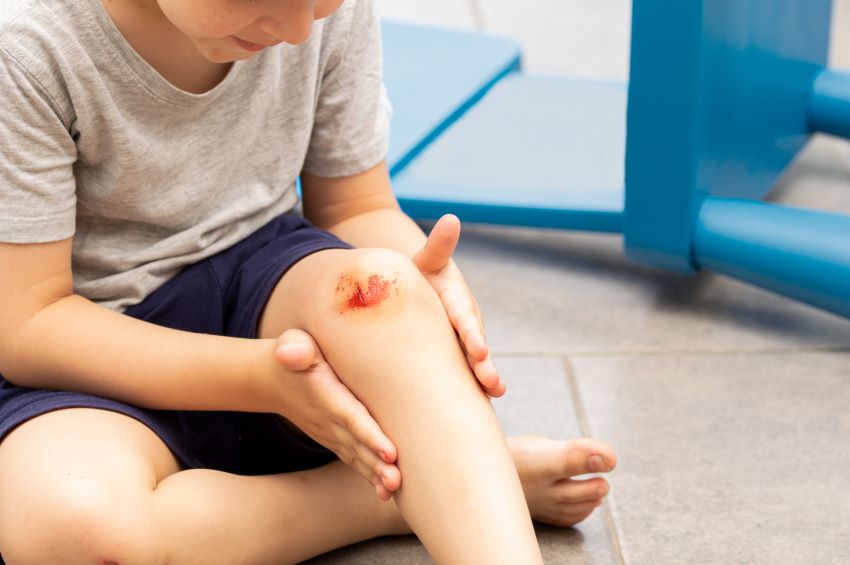ASK THE CPCMG PEDIATRICIAN: How can I help my child avoid a scar from a cut or scrape?

For active kids, cuts and scrapes are inevitable. Fortunately, these common childhood injuries can be treated at home. Here’s how to care for cuts and scrapes and help scars become less noticeable:
1. Keep the scrape or cut moist. Apply petroleum jelly on top of the scab or an antibacterial ointment daily.
2. Keep the wound covered with something that won’t stick, like a bandage or non-stick gauze with skin-sensitive tape.
3. Avoid infection which can make scarring worse. Keep the cut or scrape clean by gently washing the wound with mild soap and water every day. Do not use hydrogen peroxide or rubbing alcohol to clean the wound as it will inflame the healing skin, increasing the risk of scarring.
4. Your child may complain that the healing wound may itch but encourage them not to scratch the healing skin.
It will take some time but eventually the wound will heal, revealing new, pink skin. At this point it is very important to wear an SPF 30 sunscreen (or higher) every day. The sun’s UVA and UVB rays will affect that tender skin and can make the healing process last longer. Your goal is to protect the new skin as much as you can.
If the wound is on the face – an area of the body people tend to care about the most – wear a hat or keep the sun covered during the healing phase so the wound is not in direct sunlight. This goes for any scrape or cut – the more sun exposure you get, the more likely a scar will result.
Be sure to ignore this urban legend: you don’t want to let a wound “air out” and form a scab. This will NOT help a cut or scrape heal – instead, there is the potential for a scab to break open and become infected.
If you think the cut or scrape needs to be seen and treated by a medical professional, please contact your CPCMG provider for an appointment. This type of appointment is also appropriate for a Video Visit.

